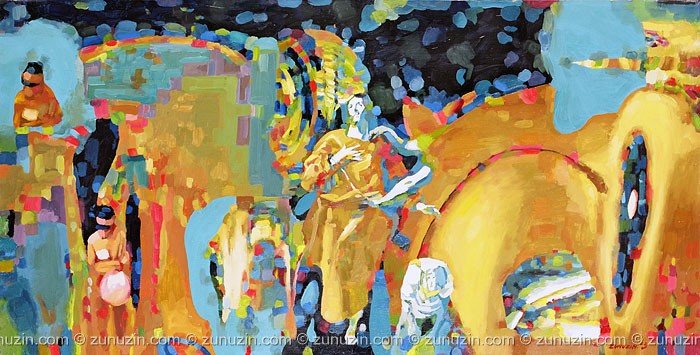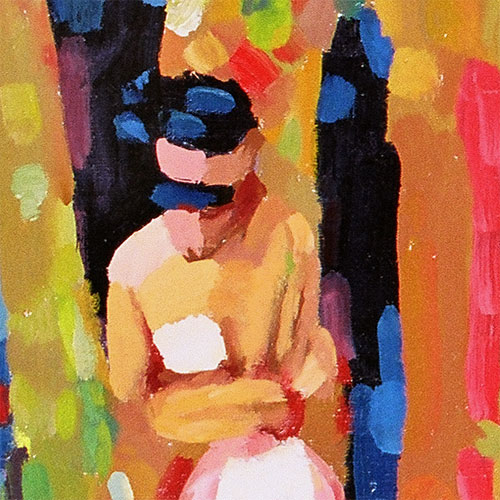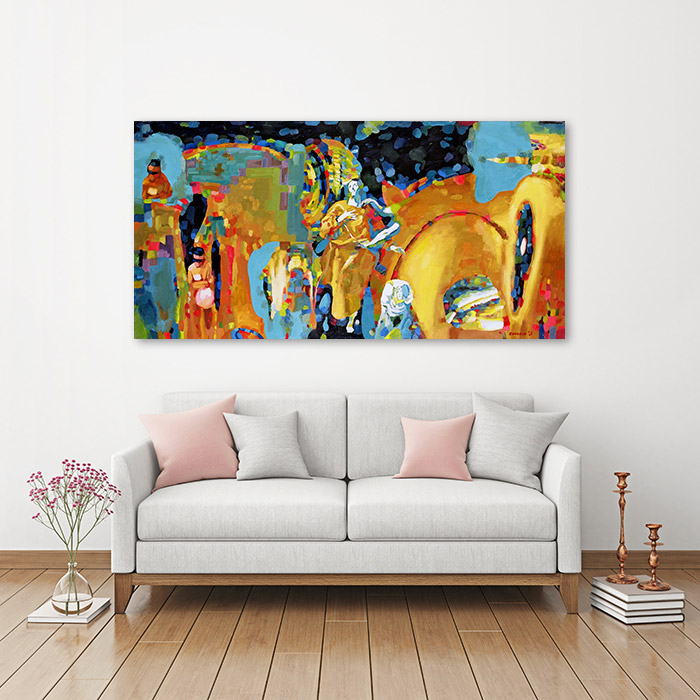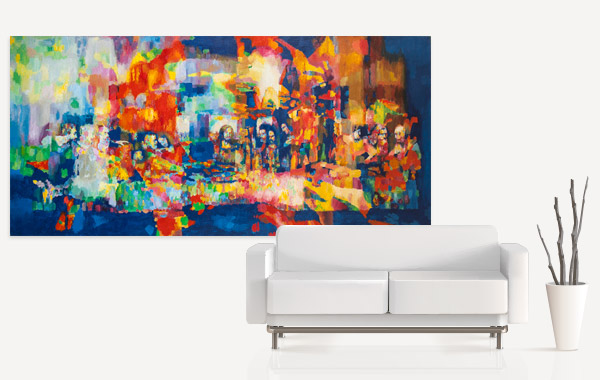Print information
- Artwork printed by EPSON Stylus Pro 7880 (Epson Ultra Chrome K3 Vivid Magenta) on canvas.
- Limited edition prints of 100.
- Each limited edition artwork will be individually printed, signed, dated and numbered by the artist Vladimir Zunuzin.
- Art Prints packaged in a plastic tube.
- © zunuzin.com watermark is only used online and does not appear on your print.
Shipment and payment
- Free worldwide shipping with tracking.
- Will usually ship within 3-5 business days.
- We send prints to all countries via Registered Airmail, they usually arrive within 35 working days to destinations within Western Europe and about 45 working days to destinations outside Europe.
- Payments by Paypal or 2Checkout.
Tags
History of the Disrobing of Christ by El Greco

El Greco |
Commenced in the summer of 1577, and completed in the spring of 1579, for the High Altar of the Sacristy of the Cathedral, where it still hangs. A document of 2nd July 1577 referring to this painting is the earliest record of El Greco in Spain. El Greco has produced one of the most dignified and moving portrayals of Christ in art. The powerful effect of the painting especially depends upon his original and forceful use of colour. Something of the effect of the grand images of the Saviour in Byzantine art is recalled. The motif of the crowding round Christ suggests an acquaintance with the works of the Northern artist, Bosch; the figure preparing the Cross could be derived from the similar figure bending forward in Raphael's tapestry cartoon of the Miraculous Draught of Fishes. This is, however, the last time that there are any hints of specific borrowings. The painting shows Christ clad in a bright red robe and looking up to Heaven with an expression of serenity as he is being tormented by his captors. A figure in the background bearing a red hat points at Christ accusingly, while two others argue over his garments. A man in green to Christ's left holds him firmly with a rope and is about to rip off his robe in preparation for his crucifixion. At the lower right, a man in yellow bends over the cross and drills a hole to facilitate the insertion of a nail to be driven through Christ's feet. The clouds above Christ, painted in strong diagonals, provide a 'path' of uplifting communication between Christ and God the Father. On the left side of the composition, the three Marys contemplate the event with distress. Above them a soldier wearing a suit of armour reminiscent of those fabricated in sixteenth-century Toledo stares out directly at the viewer. El Greco may have intended this figure to be a contemporary portrait. Via |








